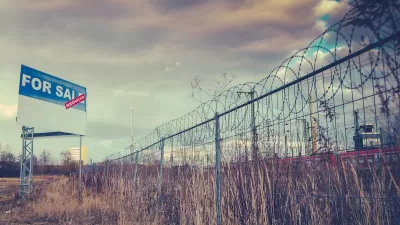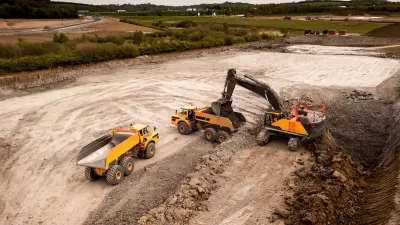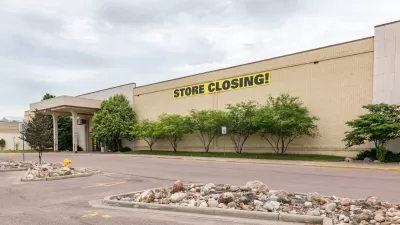The Equitable Community Revitalization Grant (ECRG) program is reshaping brownfield redevelopment by prioritizing projects in low-income and environmental justice communities, emphasizing equity, transparency, and community benefits.

The Equitable Community Revitalization Grant (ECRG) program, launched in 2021 by California's Department of Toxic Substances Control (DTSC), represents a major shift in how the state approaches brownfield cleanup and reuse. Prioritizing environmental justice and equitable development, ECRG was designed to serve communities disproportionately burdened by pollution and disinvestment. The Othering & Belonging Institute at the University of California, Berkeley recently released a report that assesses the program’s early implementation, examining how its design influenced project selection and outcomes, and how it differs from traditional approaches to brownfields redevelopment.
With over $129 million awarded across 90 projects, ECRG has shown early signs of success in aligning cleanup efforts with community needs. Compared to a sample of 108 non-ECRG brownfield projects, ECRG-funded efforts were more likely to be led by public or nonprofit entities, include robust community engagement, and be located in low-income or environmental justice communities. Projects supported by ECRG also placed a stronger emphasis on equitable outcomes, such as affordable housing, local workforce development, and community-centered reuse like parks and gardens.
The program’s design and execution reflected a collaborative and adaptive model, incorporating feedback from partners like the California Environmental Justice Alliance (CEJA) to improve equity and accountability. While it is too early to fully evaluate long-term impacts, ECRG stands out as a promising model for integrating equity into brownfields policy and practice. Findings of the report offer valuable insights for California and other states seeking to transform contaminated lands into assets that serve—and are shaped by—the communities most affected.
FULL STORY: Greater Social Equity in Brownfields Cleanup and Reuse

Study: Maui’s Plan to Convert Vacation Rentals to Long-Term Housing Could Cause Nearly $1 Billion Economic Loss
The plan would reduce visitor accommodation by 25,% resulting in 1,900 jobs lost.

North Texas Transit Leaders Tout Benefits of TOD for Growing Region
At a summit focused on transit-oriented development, policymakers discussed how North Texas’ expanded light rail system can serve as a tool for economic growth.

Why Should We Subsidize Public Transportation?
Many public transit agencies face financial stress due to rising costs, declining fare revenue, and declining subsidies. Transit advocates must provide a strong business case for increasing public transit funding.

How to Make US Trains Faster
Changes to boarding platforms and a switch to electric trains could improve U.S. passenger rail service without the added cost of high-speed rail.

Columbia’s Revitalized ‘Loop’ Is a Hub for Local Entrepreneurs
A focus on small businesses is helping a commercial corridor in Columbia, Missouri thrive.

Invasive Insect Threatens Minnesota’s Ash Forests
The Emerald Ash Borer is a rapidly spreading invasive pest threatening Minnesota’s ash trees, and homeowners are encouraged to plant diverse replacement species, avoid moving ash firewood, and monitor for signs of infestation.
Urban Design for Planners 1: Software Tools
This six-course series explores essential urban design concepts using open source software and equips planners with the tools they need to participate fully in the urban design process.
Planning for Universal Design
Learn the tools for implementing Universal Design in planning regulations.
City of Santa Clarita
Ascent Environmental
Institute for Housing and Urban Development Studies (IHS)
City of Grandview
Harvard GSD Executive Education
Toledo-Lucas County Plan Commissions
Salt Lake City
NYU Wagner Graduate School of Public Service





























